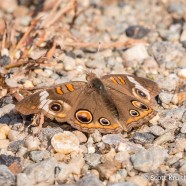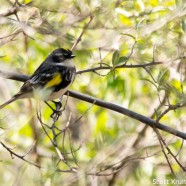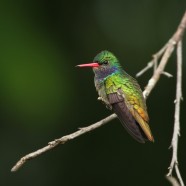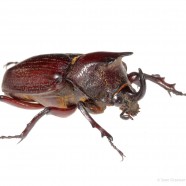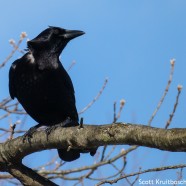Common Buckeye
You can still find butterflies like the Common Buckeye (Junonia coenia) even here in November. This individual was sunning itself on a cool morning, still looking like those wings are in great shape in late autumn. Our science and conservation staff surveys and records butterflies across a multitude of sites in New York, Pennsylvania, and Connecticut, helping to increase the knowledge of range and abundance for certain species, discover early or late individuals pushing the boundaries of flight seasons, and adding layers information on the biodiversity at important locations. We also work to...
Read MoreYellow-rumped Warbler Hiding
This Yellow-rumped Warbler (Setophaga coronata) was hiding from me, but thankfully we are still at the part of the season without too many leaves. In another week it will be much harder to see little friends like this one. The massive push of the butter butts is coming to an end as we diversify the warbler species visiting our yards. We already have some cool photos of more to show you! Stay with us… Scott Kruitbosch Conservation & Outreach Coordinator
Read MorePerched Blue-throated Goldentail (Hylocharis eliciae)
Check out the raw beauty of this perched Blue-throated Goldentail (Hylocharis eliciae) by RTPI Affiliate Sean Graesser. Hummingbird season never ends for our friends in Costa Rica. It’s a green, green world every day of the year. There are hundreds of individuals of at least 11 species hanging out with our crew. Keep an eye out for a ridiculous video of them feeding at several feeders that we will be featuring soon.
Read MoreRhinoceros Beetle
Here’s an imposingly named Rhinoceros Beetle (Dynastinae sp.), an insect of Costa Rica as photographed by RTPI Affiliate Sean Graesser for the Meet Your Neighbours global diversity project. That is not a bug to mess around with!
Read MoreAmerican Crow (Corvus brachyrhynchos)
The American Crow (Corvus brachyrhynchos) is one of those birds that are so well known to nearly everyone that we rarely stop to take the time to view them properly. Thankfully they are more common now in the east than they had been as the initial part of the 21st century saw significant losses to even this abundant species thanks to the West Nile Virus. Areas that were richer in species diversity saw fewer losses due to the virus, likely signaling the strength of a healthy ecosystem to battle a pathogen. Conservation needs to focus on certain species at times – as we at RTPI often do...
Read More



